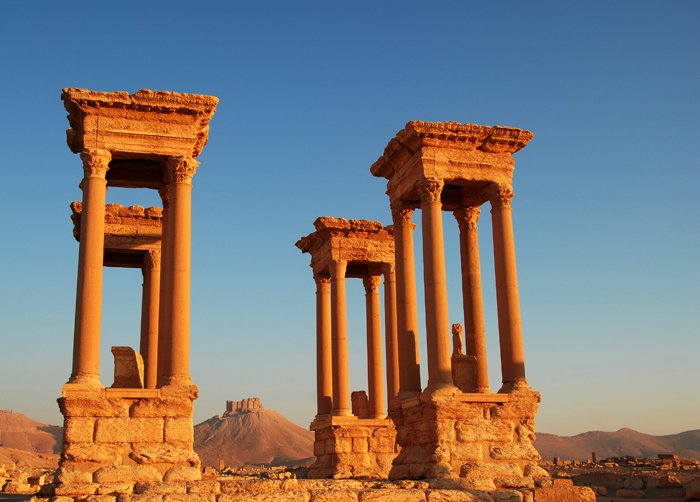
The ancient city of Palmyra, once called the “Pearl of the Desert”, is located at the intersection of the Silk Road from the east and the caravan roads from Arabia and Egypt to the south. This 2000 year old city was once a luxury city and one of the most powerful cities the world has seen. Since 1980 on UNESCO’ World Heritage List, renowned for its blend of architecture and cultures. In 2013, following the 2011 outbreak of the Civil War in Syria, it was added to the list of endangered world heritage sites.
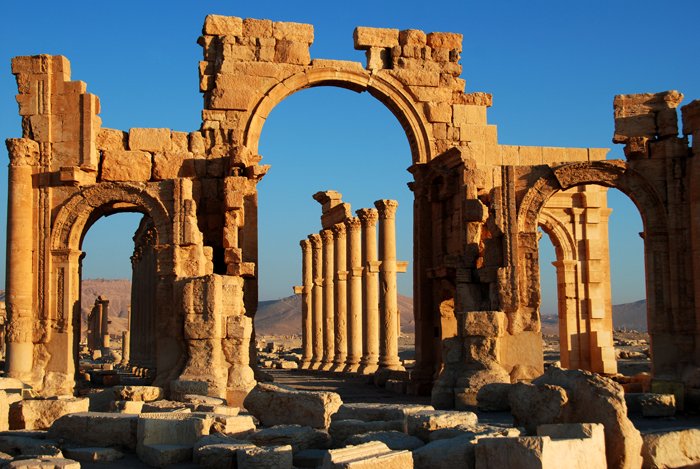
Monumental Arch- entrance to the city
ISIS controlled the city on two occasions between 2015 and 2017, destroying many of the temples and treasures. This historical site was among the top attractions in Syria before the war, with as many as 150.000 visitors a year. When I saw the photos of this destruction in the medias I felt both very sad for the loss. Not only for Syria, but for the whole world. But at the same time feeling lucky that I went before the outbreak of the war. You might have seen photos or seen documentaries of the destruction on television. I will like to share some of my photos from before the destruction and a brief introduction to this great city.
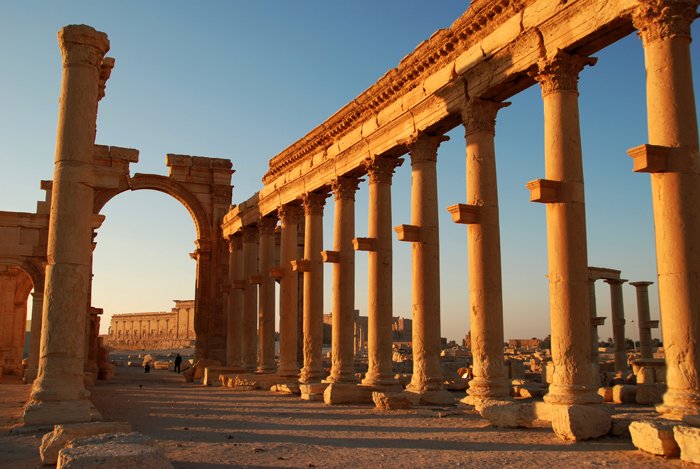
Monumental Arch seen from the inside of the city
From Damascus, I took the local bus for a journey through the desert. I went to the archaeological site both at sunrise when the temples were shining like gold. Later in the afternoon I took the guided tour to get a deeper insight to the history about the city, the temples and Queen Zenobia – maybe one of the most famous persons from the glorious days of this city.
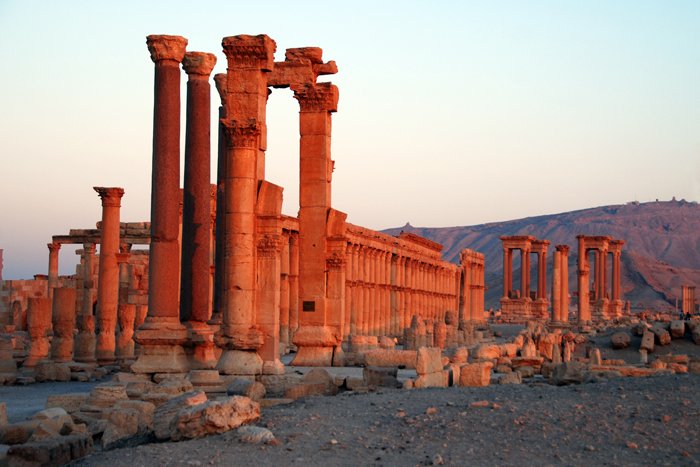
The Great Colonnade is the main thoroughfare of the city
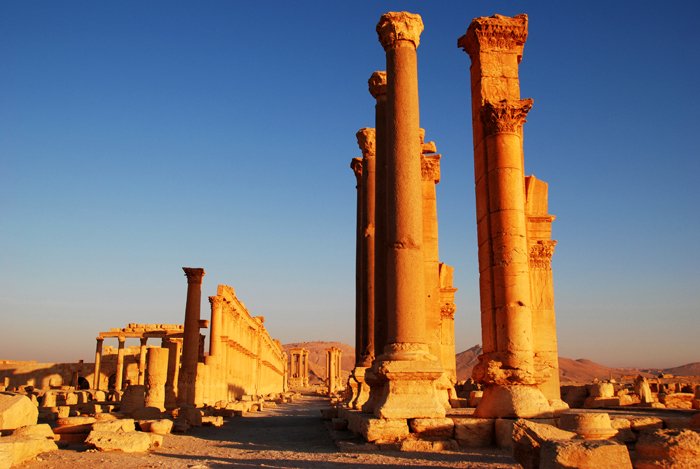
The Great Colonade from the inside
A brief introduction to the history of the city
Palmyra was established sometime during the third millennium B.C. as the settlement of Tadmor. It became the leading city in the Near East and a major trading post on the silk road. The architecture combines Greek-Roman styles with those of Persia and Arabia. This makes the remains of the ruins significant both cultural and historical. In the year 64 B.C the Roman empire conqured Syria, but Palmyra was left autonomous and became a significant trading partner with Rome.
Zenobia (c. 240 – c. 274 AD) was a third millennium queen of the Palmyrene Empire in Syria. There are many legends surrounding her ancestry, but she was probably not a commoner. She married the King and ruler of the city, Odaenathus. When he died she became the Queen. She stabilized the Roman East, conquered Egypt in 270 and secured Palmyra’s supreme power in the Near East. She maintained a stable administration which governed a multicultural empire.
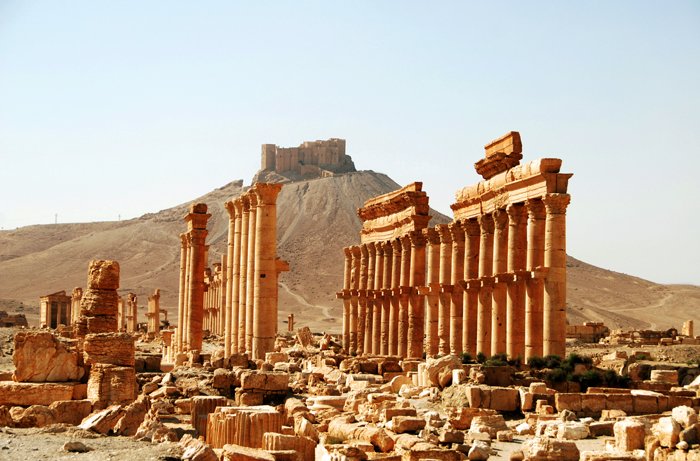
The main street
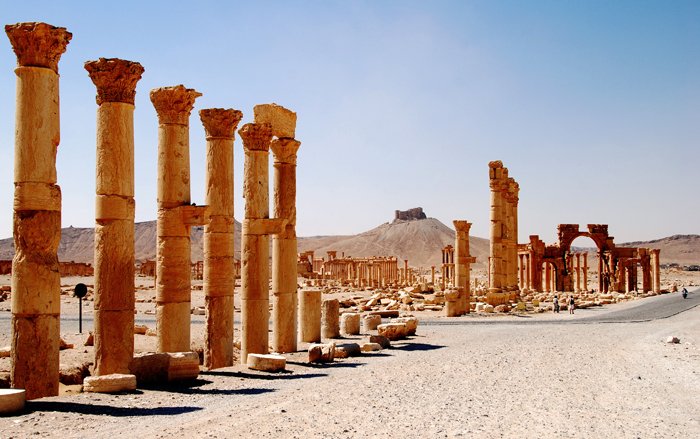
The entrance to the city
By mid 271 her control extended from central Anatolia to southern Egypt, although she remained subordinate to Rome. However, in reaction to Roman emperor Aurelian’s campaign in 272, Zenobia declared her son emperor and assumed the title of empress and declaring Palmyra's secession from Rome. The Romans were victorious after heavy fighting. The queen was besieged in her capital and captured by Aurelian, who exiled her to Rome where she spent the remainder of her life. The Romans captured and destroyed the city in 273. Zenobia died after 274, and many tales have been recorded about her fate. Her rise and fall have inspired historians, artists and novelists, and she is a national hero in Syria.
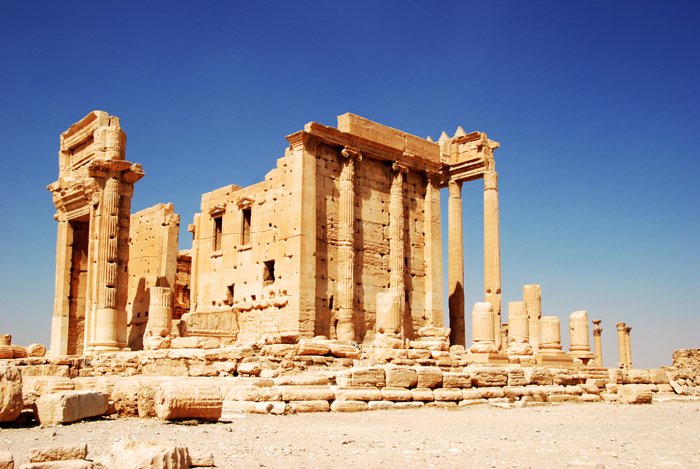
Temple of Bel
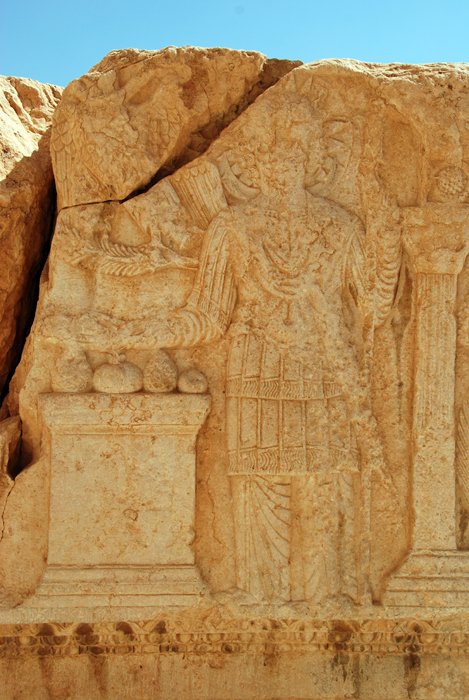
Inside the temple of Bel
The Temple of Bel This is a large temple with an outer wall around the entire complex. It is assumed that Bel has been the most important of the gods of Palmyra's inhabitants. It was built to worship the Mesopotamian god Bel. My photo shows how it looked like before the Civil War. On photos on internet I have seen what it looked like after the war. Hardly anything left!
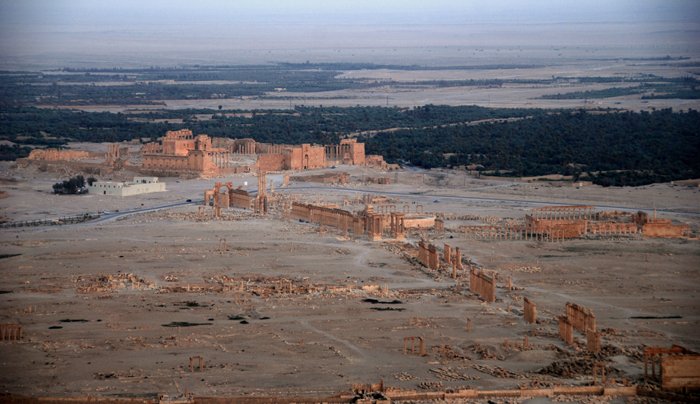
Ancient Palmyra seen from the fort
When the Syrian Army re-took the site for good in March 2017, many of the historical treasures had already been destroyed. Since it was re-taken UNESCO had been leading the restoration. I read just a few weeks ago, that the plan is to re-open some time in 2019. That inspired me to share my photos and hopefully inspire you too.
Sources: Artnews & Wikipedia
Hope you enjoyed the story and have a great weekend! :)
Please do follow if you want to keep up with my next travel story. Any upvotes or resteems are hugely appreciated!
Other travel stories, check out :
MYANMAR - watching the world go by on the yangon circular railway
THE NAMIB DESERT - an otherworldly landscape
GREENLAND - continue to disko island (part 2)
GREENLAND - a world of ice and snow (part 1)
ILE AUX COCOS - an island in the sun (Roderique part 2)
THE ISLAND OF RODERIQUE - part 1 - a hidden gem in the indian ocean
THE ANCIENT TEMPLES OF BAGAN - from sunrise to sunset
AN ARCTIC ISLAND RETREAT – and one of the most extreme places
PORLWI BY NATURE – a cultural festival and a feast for the senses
«FOOD ON FOOT» - Street food in Hanoi
GHOSTTOWN – when people moved out, the sand moved in....
U.J
Kristiansand, Norway
All the photoes are mine, Ulla Jensen (flickr, Instagram and facebook)
[//]:# (!steemitworldmap 34.571925 lat 38.280622 long PALMYRA – ancient city in the Syrian desert d3scr)